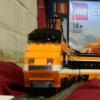
Flexible tracks
By
Legoboy22, in LEGO Train Tech
-
Recently Browsing 0 members
No registered users viewing this page.

By
Legoboy22, in LEGO Train Tech
No registered users viewing this page.